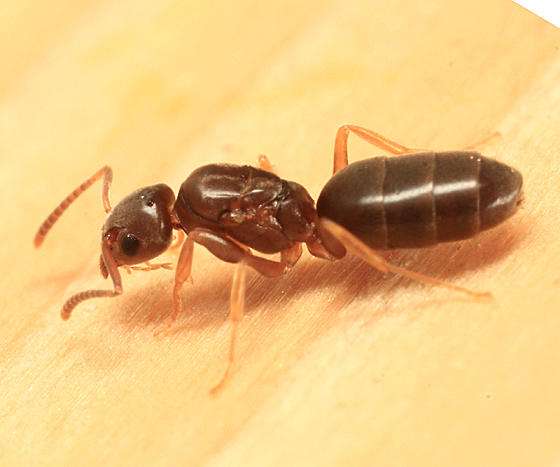
An ant species called Formica cunicularia can be found all over Europe. Although they can be found from southern Scandinavia to northern Africa and from Portugal to the Urals, they are most prevalent in western Europe and southern England. Donisthorpe notes that the species has been found in England as far north as Bewdley in Worcestershire. The worker in Formica cunicularia is typically 4.0–6.5 mm long and is an ashy gray black hue. The males are between 8.0 and 9.0 mm in length and have a consistently dark body color. The queen is 7.5–9.0 mm in size, reddish red to dark black.

Habitat
The environment of F. cunicularia might be open, generally uncluttered, or visually stimulating. Albrecht discovered that all nests in Finland had a single entrance, were small, and were located in arid, hot settings with little vegetation. They build their nests in little earthen mounds or under stones. One queen usually resides in separate nests. In contrast to the majority of other Formica fusca-group species, F. cunicularia may create observable hillocks above its nests and also creates rufibarbis-like runs next to its nest.
Biology
These ants are typically found in arid and semi-arid areas, where they feed largely on seeds. As a result, their anthills contain a considerably higher density of seeds, although there is less seed diversity due to the ants’ seed choice. While foraging, F. cunicularia will take roundabout routes; however, after they are done, they will travel straight home. In order to follow a direct course home, they do this by analyzing the total distance traveled and the direction taken during each foraging expedition. This process is known as path integration. However, there are other mechanisms that also account for their homing habit. On the basis of visual clues in their surroundings, they can also locate a route home. They will mix these two homing strategies when in unfamiliar territory, which is an intriguing aspect of their behavior. F. cunicularia can discriminate between several hues of a color, and they excel at doing so when it comes to differentiating between two shades of green. This is likely because they frequently inhabit areas that are abundant in greenery. They reside in relatively small colonies with about 5000 people. Although they are predators, they frequently scavenge. Although Formica rufibarbis’ red markings are much less obvious, their activities and appearances are quite similar.
Care Guide
- Heat Index and Humidity
- Outer world 20 to 28 degrees; Nest 21 to 24 degrees
- Outworld 30% to 60% | Nest 45% to 65%
- Hibernation or Diapause
- Yes, between 8 and 12 degrees from October to March.
- Polymorphic (Yes, minorly) (Yes, minorly)
- Minor Worker: 4 to 5.5 millimeters
- Worker I, Major, 6 to 7 mm
- They will bite if threatened and use formic acid in their diet.
- Glucose and protein (insects)
- Always make sure there is a steady supply of fresh water available.
- Nest Design
- Natural is preferred, however acrylic, glass, and ytong or cork and gypsum are also viable options.
Table





